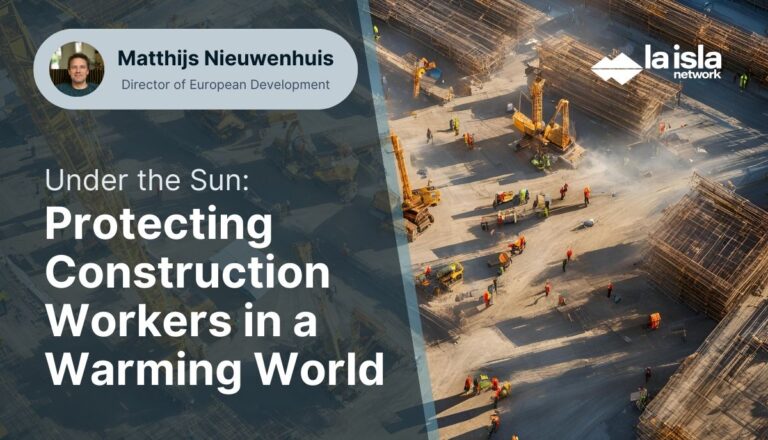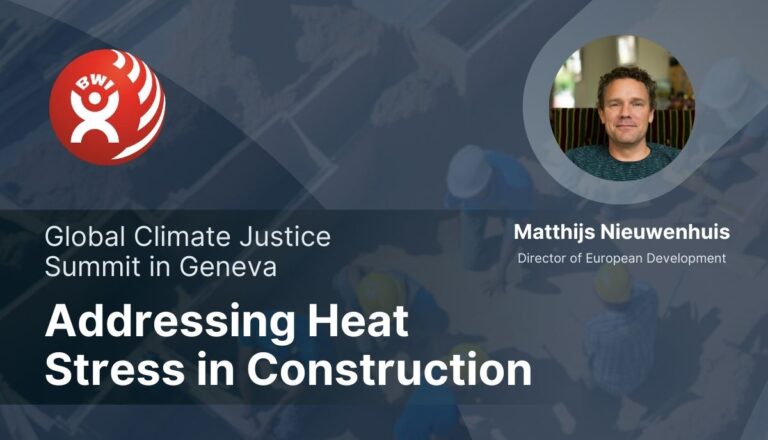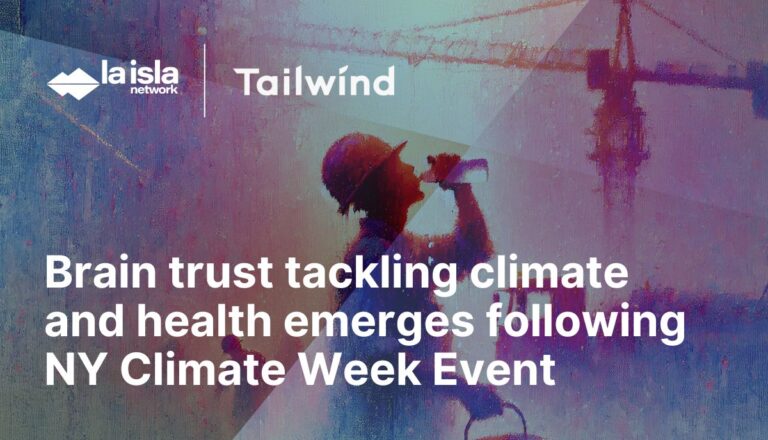The following are the reconstructed final moments of three workers who died while on the job; their deaths are attributable to the deadly effects of heat stress. No worker has to die from heat stress. The right safeguards could have saved these workers’ lives. La Isla Network honors their memories.
Esteban Chavez turned 24 on June 24, 2022. Chavez likely celebrated his birthday with family, and when the festivities were over, put some thought into returning to work the next day delivering packages for the UPS. He had been off work due to a shoulder injury, but was recovering and taking painkillers as needed.
Injuries to the back, neck and shoulders are common among package delivery workers, who spend their work days heaving weighty packages — from the warehouse to the truck, and from the truck to your front doorstep. On his first day back, Chavez probably had his recent injury in mind, doing what he could to take it easy and gradually return to his normal pace.
Chavez, his family, coworkers, or superiors could not have predicted that on his first day back he’d succumb to heat stress and collapse. But in fact the threat of heat stress is always present among workers who do heavy work in high heat and without adequate protections — these might have saved Chavez’s life.
At 1:53 pm on June 25 Chavez delivered a package at a Pasadena, California residence. The weather outside was a sunny 80 degrees fahrenheit with a relative humidity of 44 percent. Those conditions warrant caution per the heat index, a tool that measures the perception of heat to the body. The effect that the weather has on the body depends on the temperature and humidity. When the outside temperature is high enough, the body will begin to sweat to cool itself down, the water transferring internal heat from normal body function to the outside. But the body is more effective at sweating when the moisture in the air is low. Crank up the water saturation and the effectiveness of cooling down through sweat decreases.
In these scenarios most people would rest, the heat and humidity taking its toll on one’s ability to work. A typical shift at the UPS is eight hours long, however, lasting anywhere from 8:30 am to 4:30 pm. Though shifts will vary, package delivery workers are exposed to the elements more than other workers since UPS delivery trucks typically are open and have no air conditioning. Without the right safeguards in place that protect workers from heat through water, rest and shade, the riskiness of the job increases. Most likely, Esteban Chavez had been delivering packages since the morning, his body working hard to stay cool while exerting enough energy to get the job done.
At 1:54 pm, Chavez’s body had reached the breaking point. He delivered the package to the Pasadena residence and made it back inside the UPS truck where he collapsed. His body thumping against the floor of the truck was loud enough to be heard on the resident’s doorbell camera. First responders arrived within half an hour. One hour later, Chavez was pronounced dead.
Quick response after indications of heat stress can sometimes mean the difference between life and death. Though unconscious, the person succumbing to heat stress might still be alive, with a chance yet to save their life.
Victor Hernandez, 28, might have still been alive when, while picking bell peppers at a farm in Florida, he collapsed.

On January 1, 2023, Hernandez began his first day of work as a migrant farmworker at C.W. Hendrix Farms in Parkland, Florida. He had arrived from Mexico just the day before. He was recruited by Rafael Barajas, a migrant labor contractor in south Florida, with an H-2A visa for temporary agricultural workers. Barajas most likely had also recruited the other farmworkers at C.W. Hendrix.
Work began at 8 in the morning, with the workers pulling weeds. At 10 am they began placing stakes in the ground, then had a lunch break at noon. One hour later, workers began picking bell peppers. Hernandez began picking with the others, but according to the other workers started falling behind.
He told two of his fellow workers that he felt cramps in his legs. After rubbing his lower legs, Hernandez told the workers he was okay. But he fell behind even more. When the other workers nearly reached the end of the row of bell peppers, they looked back to try to spot Hernandez, but couldn’t see him.
While his coworkers continued picking, Hernandez had collapsed from heat stress. It is possible that moments after his collapse, he was still breathing, except he fell into the irrigation ditch between the rows of bell pepper plants, and was submerged face-down. The depth of the water was approximately 1 foot, 8 inches (50 centimeters). Hernandez was so fully submerged that his coworkers passed by him once, mistaking his hair for fur — what they said looked like a dead cat floating in the water.
His coworkers pulled Hernandez out of the water, and they heard air come out of his mouth. They administered CPR multiple times, but by the time first responders arrived at the scene, Hernandez was already dead. His untimely death was immediately caused by drowning, but it was ultimately moved forward by the pernicious effects of heat stress.
Heat stress might not immediately kill a worker, and before heat stress causes physical collapse, a worker might experience altered, erratic behavior. This was the case for Gabriel Infante, a 24-year-old construction worker who had been laying fiber optic cables in San Antonio, Texas when he succumbed to the heat from the Texas sun. On June 23, 2022, only a few days into the job, Infante died from a heat stroke, the medical examiner concluded.
Infante and his brother had started working their new jobs at the same time. The work ran from 7 in the morning to 6 in the afternoon. It is unclear what their break schedule was.
On the third day, Infante reportedly had trouble with the heat. The foreman told Infante to sit in the company truck, where the air conditioner was running. He sat there for two hours and no other problems were reported.
But on the following day, Infante continued to have trouble. After lunch, Infante’s coworkers noticed him wobbling on his feet. He said he was fine, but had clearly begun succumbing to heat stress. Later in the day, Infante’s unsteadiness continued. He tripped and hit his head, leaving marks. When his coworkers attempted to pick him up, Infante tried to fight them, indicating his altered mental state. At this point his coworkers called 9-1-1.
Tests done at the ER pointed to Infante’s poor condition, including abnormal levels of hemoglobin and white blood cells. There were no toxins or drugs in his body. His temperature was 109 degrees Fahrenheit. He arrived at the hospital unconscious, and died in the ICU the following day.
The deaths of Chavez, Hernandez and Infante were preventable. The appropriate safeguards — backed by data specific to the workplace and the type of work — would have saved their lives. Their memories are a reminder of the work ahead of us in protecting workers from heat stress, especially as the effects of climate change become more prevalent.







